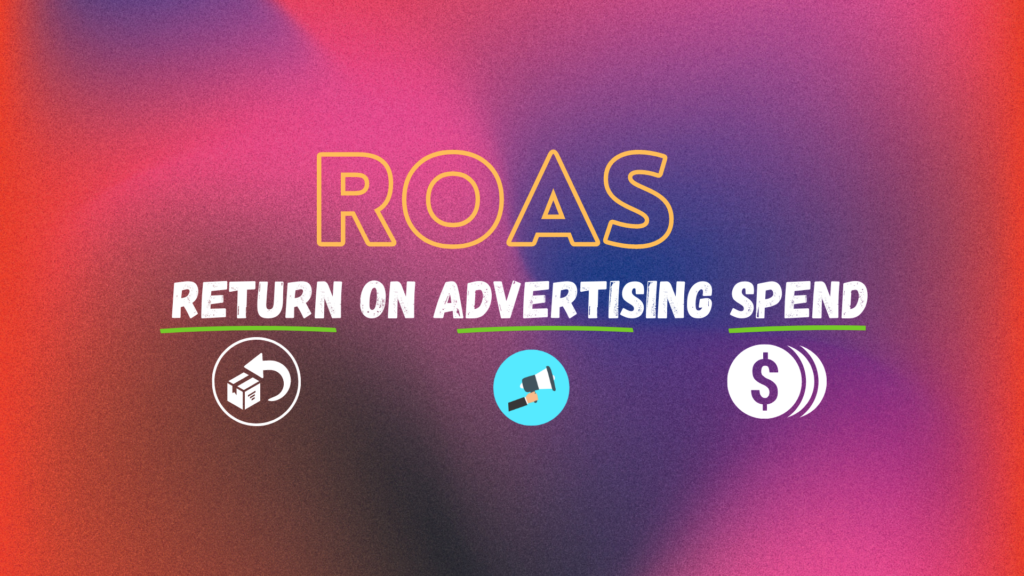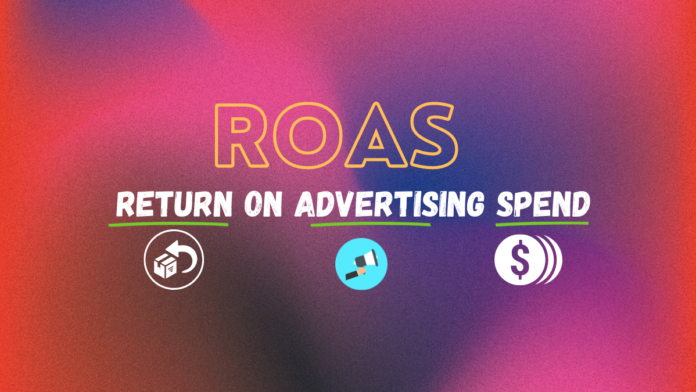RoAS – Return on Ad Spend Explained
You can get your product noticed on Amazon or other marketplaces with paid advertising, whether you’re a small seller or a big brand seller. It’s easier than ever today with the availability of PPC (Pay Per Click) ads and SEO optimization tools at low prices!
ROAS– Return on Ad Spend is an important metric that allows sellers to calculate the amount of income (or loss) from each invested dollar and evaluate how productive an ad campaign was. Considering only metrics such as clicks, impressions, and conversions can’t adequately tell us what it really takes to be successful with marketing, especially in a competitive marketplace like Amazon. If you analyze an ad campaign, ROAS is a great way to evaluate how well your ads are working, and it can help with any changes you might want to make in future campaigns!

RoAS: Why is it so valuable to advertisers?
It’s flexible! In this way, it can be used on a more granular level than other metrics like Return On Investment (ROI) and helps you make better decisions about where your money gets spent. ROAS helps online businesses evaluate which methods work and improve future campaign strategy so they can continue getting profitable results from their ads!
RoAS
Calculations
- RoAS =
Revenue (Total income from Advertising)
÷
Cost (Total ads Spend)
What is a good RoAS benchmark for Amazon?
The right return on investment (ROAS) can be a tricky thing to define. While anywhere between 3-8 RoAS is generally acceptable- A common benchmark is 4:1 – meaning $4 in revenue for every one dollar spent through ads, but this doesn’t necessarily apply for all categories or each business as everyone has their own set of expenses and profit margins as well as tactical and strategic intent. The ROAS is influenced by profit margins, operating expenses like rent or wages as well the health of the business in general.
However, maintaining healthy profit levels while still reaping significant rewards from marketing campaigns by using smart ad spending is the key. Ads that generate no profits will not only fail in their purpose but also cost a lot of time and energy without return-on-investment (ROAS).
ACoS (Advertising Cost of Sale): shows how much you spent on ads to gain a dollar from attributed sales.
Difference between RoAS and AcoS:
How to maximize RoAS:
Here are a few effective tactics for ROAS enhancement.
1. Relevant Keywords
- Using relevant keywords will help draw in traffic which will eventually lead to better Impressions, Glance Views
- Get a better Conversion rate (Orders/Clicks) and decrease the overall Cost per Click (CPC).
- To drive Amazon advertising ROAS metric it is important to correct bids, ads, campaign types as well.
- Use the Negative Keyword Feature to steer key of keywords that are getting clicks but not generating any conversion.
2. Optimized Content
- Make relevant brand information available to bring in customers. Focus on creating A+ brand content.
- With A+ Content, Amazon gives brands a way to describe their products in detail that will reach more customers.
- Brands can create high-quality images and videos for use on the site as well as custom copy about what they do best – all with an eye towards increasing traffic, conversion rate, and sales!
- The Amazon product title, which contains up to 200 characters is the most important factor in determining what to show on a search. The A9 algorithm weighs keywords from titles more heavily than those found within descriptions.
- It is vital to include keywords in the title, but in a way that stands out and catches the attention of the potential buyer.
3. Create Mobile-Friendly Version of the PDP:
- With more and more customers being online and shopping via smartphones it is crucial to create Product Detail Page (PDP) that enhance the mobile user’s experience.
- Focus on faster load time, clean and crisp product pages, and smooth checkout to reduce cart abandonment.
4. Competitor Analysis
- Ability to track Competitor activity on the digital shelf to understand what’s working and what’s not working.
- Find out keywords, promotion offers, and their ads performance
Return on Ad Spend: Conclusion
Without a solid ROAS goal, merchants are left with an online paid advertising strategy that may or not meet their business objectives. To ensure the most profit from each dollar spent on advertisements, it’s important for them to create and implement this plan accordingly by defining budget amounts as well as margins before getting started!
